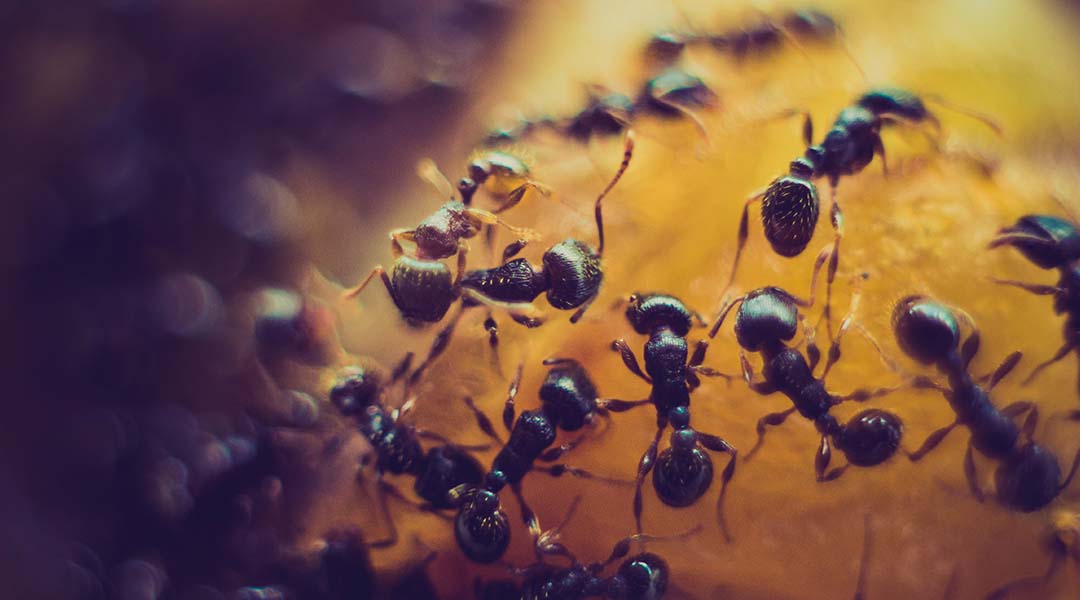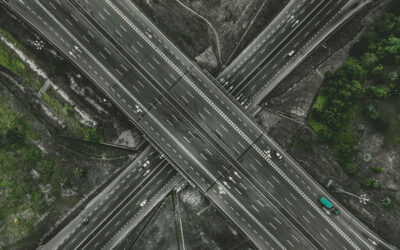Weaver ants, which live only in trees, are so-called as they weave leaves using larval silk to form large nests. Living in cooperative social groups, their colonies can include hundreds of thousands of worker ants.
When weaver ants need to close a gap in their path to explore new territories, they often form bridges, called hanging chains, with their bodies. But when ants are employed in bridge-making, this makes them unavailable for other activities, such as foraging or nest defense. As chain length increases, so too does the cost to the colony as more ants are employed. This cost needs to be weighed up against any benefits from exploring a new area that might be rich in food and other resources. In ant colonies, group-level coordination arises from individual-level decision-making at the ant level.
Previous research on behavioral rules that guide decision-making among social insects has been restricted to situations where some information on the options available was known. This lead Daniele Carlesso, of Macquarie University, in Australia, and colleagues to ask the question, how does decision-making among weaver ants faced with an unknown payout during bridge-building differ? How do ants behave when bridging a gap to a site with unknown resources, especially if the gap is too large?
“Our findings reveal that weaver ants – like humans – limit their investment into a task when the outcomes are unknown,” said Carlesso. “This strategy — termed ‘budgeting’ — is common in individual humans and nonhuman animals, and allows ants to cut their losses in case of an adverse outcome.”
Once the researchers had wrangled the sometimes-aggressive weaver ants into a box, they conducted a series of behavioral experiments. Carlesso and colleagues tasked the weaver ants with building chains that bridged vertical gaps of 25 mm, 35 mm and 50 mm.
The researchers found that most ants made decisions on whether to leave or stay while in the last 1 cm of the dangling chain. When ants join the chain, they walk to the end of it before making a decision. But once an ant has joined the chain and acted as a link in the chain for one or more ants, it cannot leave unless the other ants move away.
On further observing ant behavior, the researchers noticed that the bridge length was governed by ants that chose to leave or stay once they had already joined the chain. The ants visually judged their distance from the platform—if they were closer to it, they stayed in the chain.
Besides distance, the number of ants participating in bridge formation also played a role. When bridges grew large with more ants involved, arriving ants were more inclined to join colony efforts.
Moreover, traffic flow and its direction also affected the ants’ decisions. For instance, if more ants showed up at the end of the chain, ants in the chain were more likely to stay in it. Whereas, if more ants were leaving at the end of the chain, ants in the chain were more likely to spend less time in the chain.
Based on these behavioral experiments, the researchers used several parameters to simulate ant behavior in a theoretical model. The three parameters derived from the behavioral experiments included the probabilities of joining and leaving the chain as well as the rate of ants reaching the chain. The final parameter, which was chain size, was derived from the model itself.
The team ran simulations that paralleled the earlier behavioral experiments. They found that results from the theoretical model were quite similar to those observed experimentally. This reaffirmed that ants who remained in the chain did so on the basis of their distance from the platform.
After establishing the theoretical model, the researchers returned to their original question. Would bridge formation stop if the gap was too large? To test their theory, the team modeled ant behavior for vertical gaps ranging in size from 0 to 120 mm. When faced with taller gaps, the ants refrained from building chains. They found that ants stopped building bridges past a certain threshold — when gaps were taller than 89 mm.
Putting their model to the test, they ran more behavioral experiments, and found, as predicted that ants failed when tasked with bridging gaps of 110 mm. Shortly thereafter, the same colonies rapidly formed chains across gaps of 35 mm, ruling out a lack of motivation as a possible restraint.
Since the ants appeared to visually gauge their distance from the platform, the researchers wanted to see if the ants could be tricked into building longer chains. “We thus ran an additional experiment where we could lower the platform ants had to reach using a slider. As the chain grew, we lowered the platform, keeping it just out of reach of the ants,” said Carlesso. With the platform always within reach, but not quite, the ants went on to form chains as long as 125 mm.
“Our results reveal how simple rules can guide groups in making adaptive collective decisions in the absence of payoff information,” added Carlesso. “Not only does this help us understand ants — it also provides an algorithm for decision-making in uncertain scenarios, which can be applied in multi-agent artificial systems such as swarm robotics.”
In the future, the research team wants to explore how visual stimuli would affect bridge formation by these ants.
Reference: Daniele Carlesso, et al., A simple mechanism for collective decision-making in the absence of payoff information, PNAS (2023). DOI: 10.1073/pnas.2216217120
Feature Image by Salmen Bejaoui on Unsplash

















